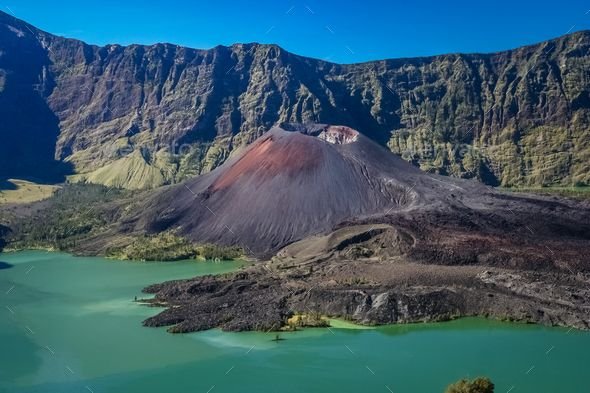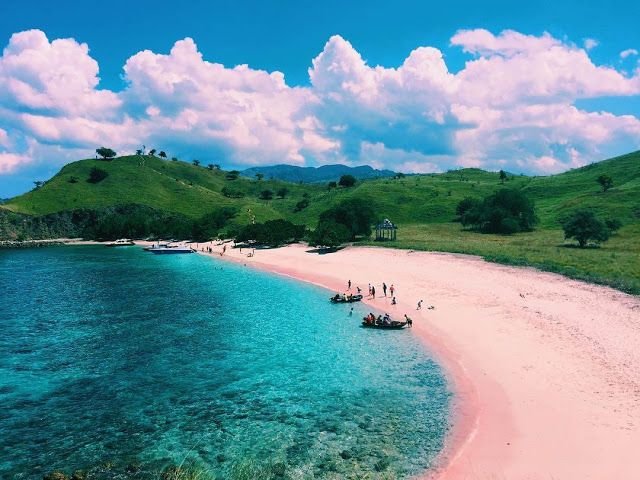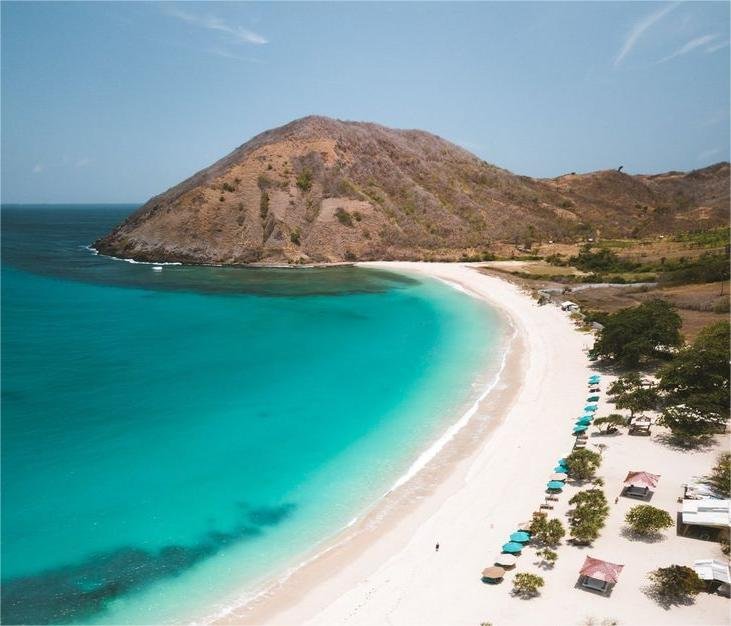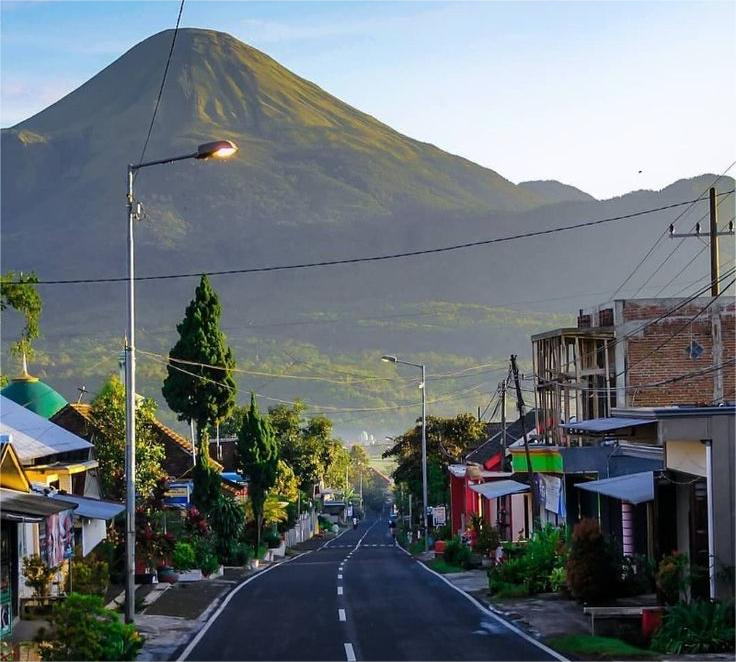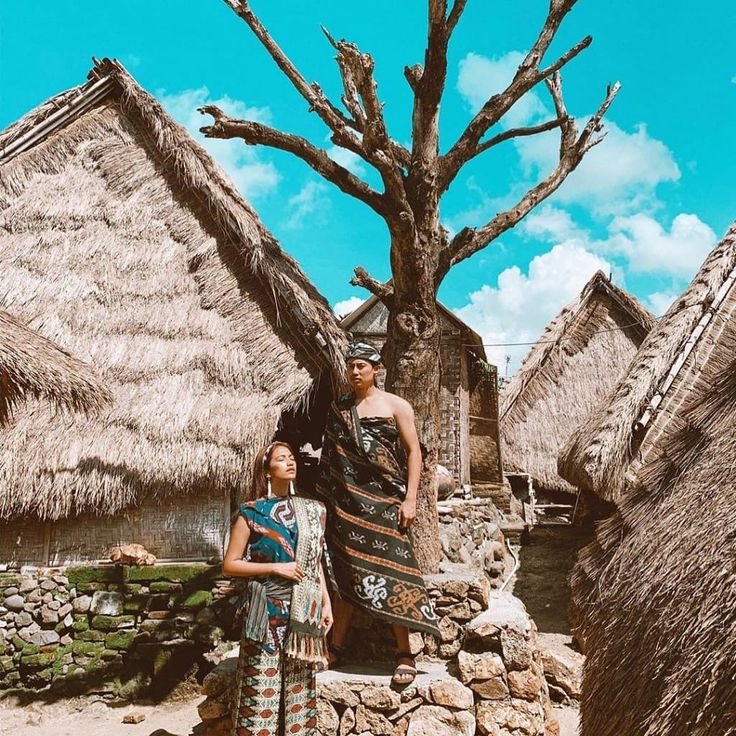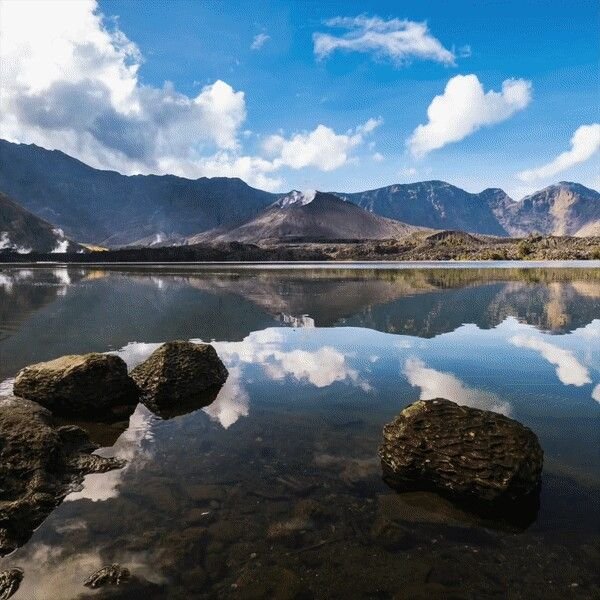Rinjani National Geopark, located on Lombok Island in Indonesia, is a renowned geological and natural wonder. This geopark, dominated by the majestic Mount Rinjani, is an essential destination for geologists, adventurers, and nature enthusiasts alike. Here’s a comprehensive guide to Rinjani National Geopark, focusing on its geological significance, biodiversity, cultural heritage, and visitor information.
Geological Significance
Rinjani National Geopark is centered around Mount Rinjani, the second highest volcano in Indonesia, standing at 3,726 meters. This active stratovolcano is part of the Pacific Ring of Fire, making it a significant site for geological studies. The park’s geological features include:
- Segara Anak Lake: A stunning crater lake located at 2,000 meters above sea level, formed by a massive volcanic eruption around 1257 AD. The lake’s unique blue-green waters add to the park’s scenic beauty.
- Volcanic Cones and Craters: Various cones and craters within the park offer insights into the volcanic activity over centuries. The youngest cone, Barujari, emerged in the 1990s.
- Lava Flows and Pyroclastic Deposits: These geological formations provide a visual history of Mount Rinjani’s eruptive phases, contributing to scientific research and education.
Biodiversity
The geopark is a biodiversity hotspot, hosting a range of ecosystems from tropical rainforests to alpine meadows. Key highlights include:
- Flora: Over 500 plant species are found in the park, including rare orchids and endemic species like the Edelweiss flower.
- Fauna: The park is home to various wildlife, including the Rinjani Scops Owl, Sunda Porcupine, and the Javan Mongoose. Birdwatchers can spot more than 100 bird species within the park’s diverse habitats.
- Marine Life: The geopark’s coastal areas, particularly around the Gili Islands, are rich in marine biodiversity, with vibrant coral reefs and numerous fish species.
Cultural Heritage
Rinjani National Geopark is not only a natural treasure but also a cultural one. The local Sasak people have lived in harmony with the park’s environment for centuries. Cultural aspects include:
- Traditional Practices: The Sasak people’s traditional farming and fishing techniques are integral to their way of life, demonstrating sustainable living practices.
- Spiritual Significance: Mount Rinjani is considered sacred by the local communities. The annual pilgrimage and ritual offerings at Segara Anak Lake highlight the cultural and spiritual connections between the people and the mountain.
Visitor Information
Rinjani National Geopark is accessible to visitors year-round, with various activities to explore:
- Trekking: The most popular activity, with routes ranging from moderate to challenging. The trek to the summit of Mount Rinjani is a favorite among hikers, offering breathtaking views of the crater lake and surrounding landscapes.
- Camping: Numerous campsites around the park provide a perfect opportunity to experience the park’s natural beauty overnight.
- Hot Springs: The park’s hot springs, such as Aik Kalak, are a great spot for relaxation and rejuvenation after a long hike.
- Guided Tours: Professional guides are available to enhance the experience, providing insights into the park’s geology, flora, fauna, and cultural heritage.
Conservation Efforts
Rinjani National Geopark is committed to conservation and sustainable tourism. Efforts include:
- Environmental Education: Programs aimed at educating both locals and visitors about the importance of preserving the park’s natural and cultural resources.
- Community Involvement: Initiatives that involve local communities in conservation activities, ensuring that tourism benefits are shared and sustainable.
- Research and Monitoring: Ongoing scientific research and monitoring to understand and mitigate the impacts of tourism and natural hazards on the park’s ecosystems.
Conclusion
Rinjani National Geopark is a unique blend of geological wonders, rich biodiversity, and cultural heritage. Whether you are an avid trekker, a nature lover, or a cultural enthusiast, this geopark offers an unforgettable experience. By visiting Rinjani National Geopark, you contribute to its conservation and the well-being of the local communities, ensuring that this natural treasure is preserved for future generations.
For more detailed information, including travel tips and regulations, visit the official Rinjani National Geopark website or contact local tour operators.



